In a mood to share a professional experience I had about four days ago. A patient came to the hospital with her boyfriend to run a pregnancy test, (PT). The lady and the supposed boyfriend were quite very young, so I presumed youthful exuberance has caught up with them.
Collecting her blood sample was pretty dramatic since she was obviously trypanophobic ( the fear of needle). I think I would say she really gave me tough time trying to do phlebotomy (collection of blood intravenously). At some point I got frustrated, so I decided to use the pricking method ( using lancet to prick the thumb). A lancet is a simple medical device with a pointed sharp pin for piercing the skin in a bid to release blood.
The major difference between the former and the latter is that, using intravenous route, you will obviously get enough blood required for your sample analysis while using the pricking method, you get a drop of blood. Though pricking is easier and faster than using needle which will require am anticoagulant or a plain tube for storage.
Succeeded in using the lancet holder with its lancet in place to collect the blood sample required. After the blood was extracted, I conducted the test and the result turned out negative. I was not so comfortable with the result since prior before the test, the information I got from the boyfriend was that he had an unprotected sex with the girlfriend and to cap it up, he ejaculated (the climax of sexual intercourse in men mostly, accompanied with the release of semen).

Positive pregnancy test result
The result of the test returning as negative made me had doubts. So I instructed them to return to the hospital as early as possible with her very first early morning urine. You might be asking, why urine? Don't worry, before the end of this article, you will get to understand better. Just flow with me!
The next day, they returned with the urine sample. Conducting the test again, the results came out positive. To confirm the results, I conducted the test again with another strip and it still returned positive. The big question now is, why did the test done with the blood gotten through the pricking method return negative instead of positive? Let's find out!
General working principle of test strips
Test strips generally function based on one major principle and that is, the interaction or cross reaction between an antigen and an antibody. This reaction leads to the formation of an agglutination complex known as antigen/antibody complex
Antigens are unique molecular markers associated with most molecules. They give molecules or substances unique identification and most times, the only way they are identified is when they are reacted with antibodies. Antigens/antibody interaction is like a lock and key model of enzymatic reactions.
The major thing employed the production of test strips is the antigen/antibody complex formed. The antigen antibody complex formed could be read macroscopically or microscopically. Some involve enzymatic and chromogenic reaction producing visible light that is specific and indicative of the presence of the biomarker under investigation. Generally all this type of assays are known as lateral flow immuno-assay.
Lateral flow immuno-assay test strips have majorly Sample pad, the region where you place a drop of the sample which may or may not contain the analyte you intent to examine. It contains some salts and buffer and helps to ensure that the sample will be able to react effectively. Secondly, it also mainly helps in holding the sample in place for migration to the conjugate pad. The next layer is the conjugate pad.
This pad contains a special type of antibody known as conjugated antibody. A conjugated antibody is a type of antibody that has an attachment which are usually fluorescent particles - substances that produce visible light upon excitation. Colloidal gold is usually the most commonly used fluorescent particles. Conjugated antibodies are mainly designed to be highly specific to the analyte you want to measure. If the analyte (usually antigens) is present in the sample, they bind to them and form an analyte or antigen/conjugated antibody complex. This complex then migrates by means of capillary action from the conjugate pad to the zone of detection or the test zone.
In the test zone, there are either another antibody or antigen that have been impregnated to a nitrocellulose. The type of substance (antigen or antigen) impregnated on the nitrocellulose membrane all depends on what the strip is intended to measure. If it is intended to measure antigens in a sample, then, most likely, it will be impregnated with antibodies. If it is designed to detect antibodies, then it will be impregnated with antigens.
As the complex enters the detection or test zone, the antibodies or antigens impregnated on the nitrocellulose membrane binds and reacts with the analyte in the complex if it is present and subsequently produces a visible colour (indicative of a positive result). If the analyte is not in the sample, there will not be any form of visible colour in this zone (indicative of negative result).
To ensure the validity and functionality of the strip, there is also a control zone or line. The control line contains antigens or antibodies that are specific to the conjugated antibodies that were impregnated in the conjugate pad. Other unbound conjugated antibodies bind to immobilized antigens in this zone to produce a visible colour. As long as there is a visible colour in the control line, it means that test strip is valid and functional. In essence, all test strips must produce visible colour in the control line to confirm its validity, if otherwise, then the strip is assumed expired or not valid and as such, cannot be used for any medical diagnostic purpose.
The last layer of the strip is the absorbent pad. This mainly functions to absorb excess sample flow through the membrane. This is the short summary of how test strips work and the principle behind their functionality.
In the case of pregnancy test strips, they are impregnated with antibodies that detect the Human Chorionic Gonadotropin hormone, (HCG) that is released after conception in females. This hormone is the major biomarker looked out for as soon as a woman is pregnant.
Human chorionic gonadotropin is a hormone produced primarily by syncytiotrophoblastic cells of the placenta during pregnancy. It is a chemical created by trophoblast tissue, tissue typically found in early embryos and which will eventually be part of the placenta. The hormone stimulates the corpus luteum to produce progesterone to maintain the pregnancy
HCG is secreted by cells of the placenta known as syncytiotrophoblasts once conception begins. This hormone is only physiological in pregnant women but in men, it can be an indication of cancer. In women that just conceived, HCG is the very first pregnancy hormone that shoots up before oher hormones (Progesterone, estrogen, human placental lactogen etc) of pregnancy follow suit.
Since HCG is the very first hormone to be secreted once pregnancy has occurred, it is logically right to use them in testing for early pregnancy. This obviously why it is incorporated into diagnostic test strips for early detection of pregnancy.
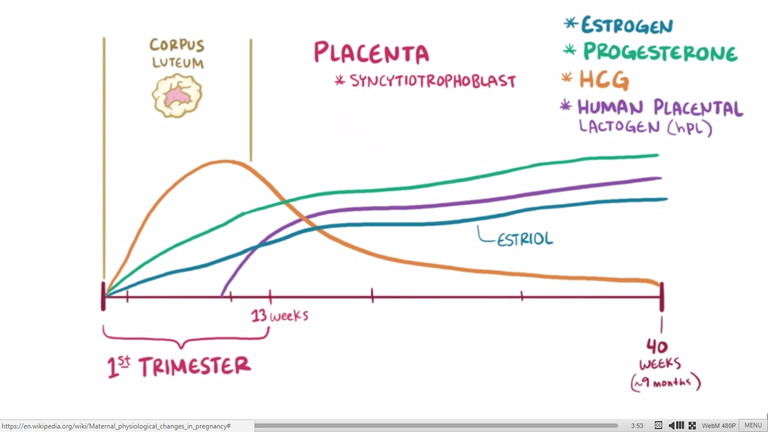
Graph of the levels of estrogen, progesterone, beta-hcg throughout pregnancy
HCG hormone continues to rise in the woman up until after the first trimester, it then declines. In essence, the best time to test for this hormone is usually within the first three months of pregnancy. This however does not mean it you cannot detect it all throughout the stage of pregnancy.
When HCG is low at early pregnancy, it can mean an abnormal pregnancy or complications. Their measurement is of utmost importance in detection of abnormality during pregnancy. HCG is a vital hormone that must be secreted at the early onset of the pregnancy because it is the major hormone that will stimulate the corpus luteum (a mass of cells in the ovary) to produce progesterone. Progesterone in turn helps to maintain pregnancy.
HCG is mostly found in the blood circulation and also in the urine. In as much as HCG is an indication of pregnancy, it sometimes not the case at all times. There are cases when HCG presence in urine or blood could mean ectopic pregnancy (when fertilization of ovum and sperm occurs anywhere outside the uterus).
Ectopic pregnancies can be fatal if not removed as soon as possible. There is also a chance of people being transfused with blood that contains HCG and as such, conducting HCG test using serum in this case would yield a false positive result in the patient. All this can negate a positive HCG result if they are not ruled out.
Why did the first test I did returned negative?
Between Urine and serum sample for HCG testing, serum is more sensitive and better than urine because the chances are high that, the urine might be contaminated with waste substances that can interfere with the result. Using serum sample, the assay can detect HCG as low as 1 to 2 mIU/mL. As a side note, it is always better to use early morning first voided urine because it contains higher concentration of the HCG hormone and it also rules out the chances of missing the hormone or getting a false negative result.
Blood sample gotten through blood pricks tend to be smaller in amount and they tend to also have smaller concentrations of the analyte of interest. In my case, the HCG in the sample I collected was apparently smaller in concentration and thus, could be the reason why the result was negative. Strip tests are usually performed on whole blood taken from a finger prick. This always has a lower concentration of the hormone, analyte or antibodies you want to measure than serum or plasma.
On the other hand, it could also be as a result of Hook's effect. Hook's effect is a situation where the analyte of interest in a sample is so high in concentration that, they overshadow the number of free binding conjugated antibodies.
"Hook effect" can occur when hCG levels are about 500,000 mIU/mL. This is because there are so many hCG molecules that they saturate both the tracer and the antibodies separately, which doesn't allow for the sandwiching of the tracer-hCG-antibody required for the measurement. This means that all of the complexes are washed away, giving a false-negative result.

At higher concentration of analytes, detectors tend to produce lower signal of measurand
Since the analytes outnumber the available conjugated antibodies, it will make it highly difficult to produce accurate results. Strips are quite good for quick intervention to determine the pregnancy status of a woman but they do not take the place of standard Enzyme linked immunosorbent assay (ELISA), which is sensitive than strips.
Strips basically fall under the category of Point of care testing (POCT) - test that can be comfortably done with kits even at home, e.g Blood sugar testing using Glucometer. They are produced to fill in the gap created by some rigorous and tedious assays but still they do not over rule standard techniques. There are are urgent medical interventions that may require quick pregnancy test results. With test kits, the result can gotten and this will help guide prognostication pending when the test is done for confirmation.
Criteria that must be considered before a kit is considered good for diagnosis
If a test kit is produced to detect the presence of a specific analyte, it should be able to do this without cross reacting with any molecule that may have close structural form with the original substance being tested for.
There are a lot of factors that are put into consideration while producing kits. Aside sensitivity and specificity which I have explained in one of previous post here, it should be able to produce desired results in lesser time.
Producing kits that are reliable and with high sensitivity and specificity for what they are being tested for, is very important especially in blood transfusion practice where Transfusion transmissible infections, (TTIs) are always screened for prior transfusion.
In a nutshell, a good test kit must:
•Have avidity (ability to bind strongly to the analyte being measured
•Be reliable and give accurate result at all times
•Be highly specific and sensitive
•Not in anyway cross react with any molecule that might have homologous structure to what is being measured
•Be ideal
Test strips are basically used for screening test and not for confirmatory. Pregnancy test strips only give you an flash information, it does not reveal the stage of the pregnancy as well as the status (could be ectopic pregnancy). You may actually use test strip to check your pregnancy status and if positive, it is expected you go for scanning to affirm the status of the baby.
Strips give qualitative results (positive or negative) while standard testing using ELISA gives a quantitative result (the actual amount of the hormone in the woman). In standard testing using ELISA, what is used for testing is the serum because generally, hormones are more concentrated in the serum. Serum sample is gotten by allowing a nonanticoagulated blood to retract in a plain tube.
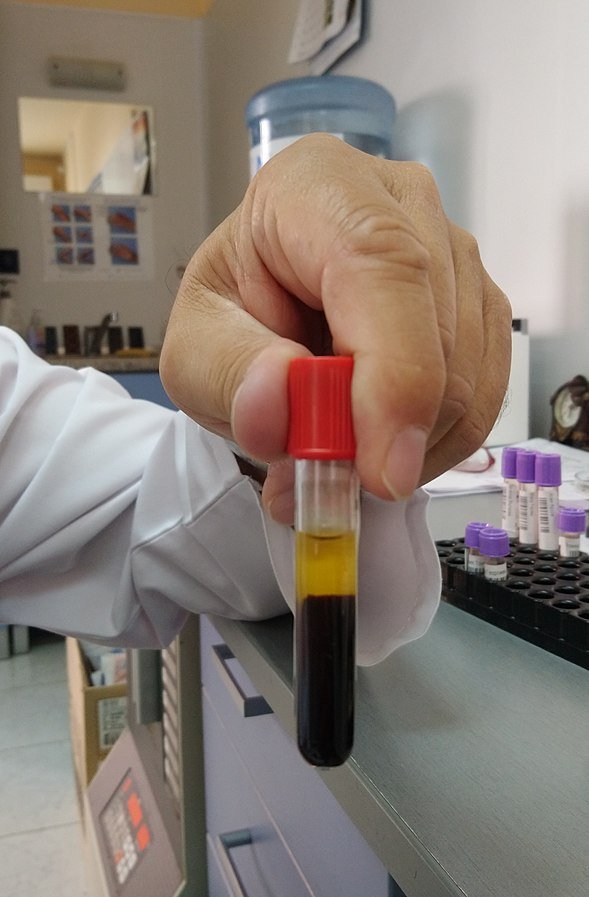
serum separation in a plaintube
Plasma (gotten by either centrifuging a blood in an anticoagulant tube or by allowing the blood to settle) could also be used for the investigation but because it contains much impurities like proteins, clotting factors that could interfere with readings of the machine, serum is always preferred. In the image above, the glary tube with a red cap is the plain tube while the ones in the background with purple covers are the anticoagulant tubes.
In conclusion, since test strips are POCTs (test you can easily do on your own using kits), it is much better and advisable you use urine instead of pricking yourself (not safe and advisable since you are not a medical professional). You could get a false negative result by doing such, as you can see from mine. If you use urine (early morning urine) and it reads positive, next thing you should be thinking about is your visit to the hospital. We will be happy to receive you.
stay awesome!
References
•IVD Lateral Flow – Sample, Conjugate, and Absorbent Pad Basics
•Corpus Luteum
•Lateral flow assays
•Human Chorionic Gonadotropin
•Biological functions of hCG and hCG-related molecules
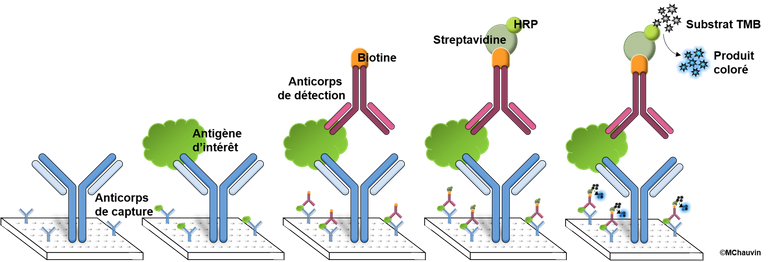
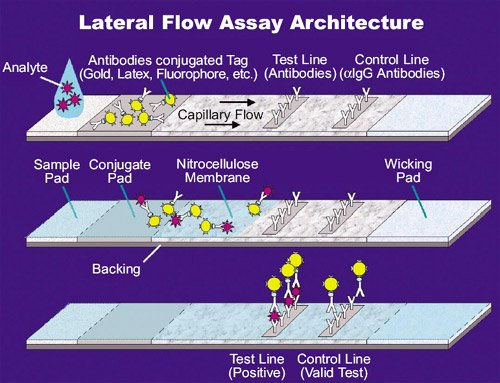
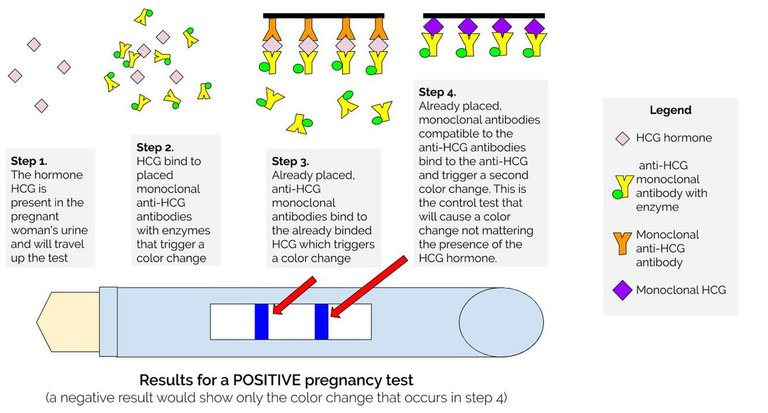
This is just about everything a woman would want to know about self-testing for pregnancy. It seems that a negative might not be a certain result. Should be followed up a couple of days later with another test, perhaps?
Great article. Amazing amount of work and detail went into this (as always is true with your blogs).
Yes, sometimes, the strip can be ineffective or not in good condition because the contents in the sample pad are mostly susceptible to deterioration either by heat or any substance that has damaging effect.
An alteration in the buffered content, renders the strip dysfunctional.
A very good content with an excellent presentation. Your comments to @gentleshaid regarding the complications left me wondering if they had gone to a quack doctor for the procedure.
I hope something positive happens to her (although I don’t support act), if not what is the fate of the person that carried out the procedure on her?
Thanks for the content.
Thanks for the read and reaching out.
They probably must have gone to quack doctor for the procedure.
As regards the fate of the person, it all depends on the action that will be taken by the boyfriend and which I am pretty Sure, he would almost do nothing because he must have signed a consent form for the procedure to be carried out. This document vindicates the doctor who carried it out.
If it is a quack doctor, jail term awaits.
Concerning the first blood test you made, could it be possible that the test was done too early, and for that reason it got a negative result?
I was unfortunately sad to read the follow-up of @gentleshaid's comment. Lack of responsibilities apparently, which is not surprising if they are as young as I could guess from your blog...
Cheers, and thanks for this very nice and instructive blog!
you are not totally wrong with your assumption because sometimes, when it is done prior secretion time of the hormone into the blood circulation, it will return as false negative.
But in their case, she had already conceived unknowing to her. They came to come only when she realized she has missed her monthly menstrual flow.
To be specific, she came after about three weeks post sexual intercourse.
Ah OK. Then it was definitely not too early (I just didn't have that piece of information ;) ). Thanks for the clarifications, and have a nice week-end!
Congratulations to the young couple. They are officially welcome to adulthood and parenthood.
Lol... unfortunately, they came back to the hospital not too long ago. Knowing her status, the boyfriend opted for abortion, unluckily for them, it didn't go down well where they did it.
Some part and remnants of the abortus (an aborted baby) was still left in the uterus. Complications began and they had no choice but to return to the hospital for manual evacuation.
That summarizes a generation that is sexually liberated.
It's quite a pity!
Let's just hope her uterus wasn't punctured in the process, if not, life time infertility. Time will tell.
Thanks for your contribution to the STEMsocial community. Feel free to join us on discord to get to know the rest of us!
Please consider delegating to the @stemsocial account (85% of the curation rewards are returned).
Thanks for including @stemsocial as a beneficiary, which gives you stronger support.
Yay! 🤗
Your content has been boosted with Ecency Points
Use Ecency daily to boost your growth on platform!
Support Ecency
Vote for new Proposal
Delegate HP and earn more, by @cyprianj.
A long but very informative read. 🙂
!1UP
You have received a 1UP from @thecuriousfool!
@stem-curator, @vyb-curator, @pob-curator, @neoxag-curator, @pal-curatorAnd they will bring !PIZZA 🍕 The following @oneup-cartel family members will soon upvote your post:
Learn more about our delegation service to earn daily rewards. Join the family on Discord.
PIZZA Holders sent $PIZZA tips in this post's comments:
(18/20) @curation-cartel tipped @cyprianj (x1)
Learn more at https://hive.pizza.